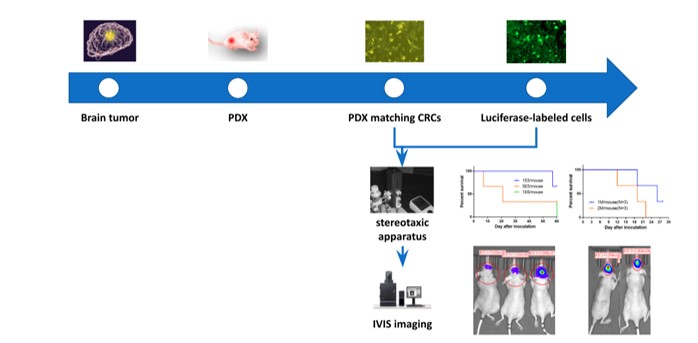LIDE has established brain metastatic patient-derived orthotropic xenografts (PDOXs) models, including metastasis from breast and gastric cancers.
| Model ID | Source | CRCs | Luciferase labeling | In vivo evaluation |
| GL261 | Murine glioblastoma cancer cell line | N/A | N/A | Completed |
| U87-MG | Human glioblastoma cancer cell line | N/A | Completed | Completed |
| U251 | Human glioblastoma cancer cell line | N/A | Completed | TBD |
| LD1-0020-200615 | Human glioblastoma PDX | Completed | Completed | Completed |
| LD1-2009-362263 | Human breast cancer brain metastasis | Completed | Completed | Completed |
| LD1-2009-362541 | Human breast cancer brain metastasis | Completed | Completed | Completed |
| LD1-2017-362457 | Human gastric cancer brain metastasis | TBD | TBD | TBD |
| LD1-0011-362257 | Human HCC brain metastatic PDX | TBD | TBD | TBD |
| LD1-2059-362445 | Human NSCLC brain metastatic PDX | TBD | TBD | TBD |
Methodology:
- This novel method starts with using samples from patients with primary tumor that metastasized to the brain (tissue, cerebrospinal fluid, etc.).
- Cell populations are generated using conditionally reprogrammed cells, which are further labeled with luciferase.
- These cells are inoculated into mice ventricles via a stereotaxic apparatus.
- Survival of mice is recorded and intensity of fluorescence can be tracked in real time using In Vivo Imaging System (IVIS).

Fig. Schematic of PDOX process for brain tumors